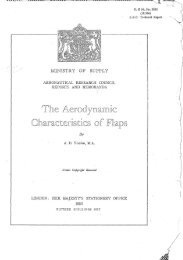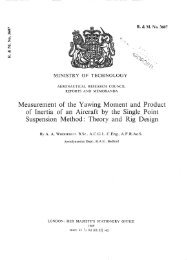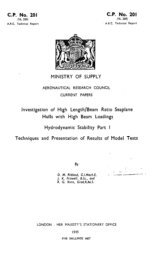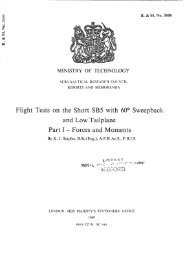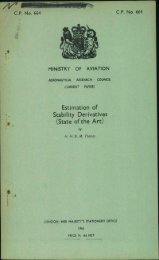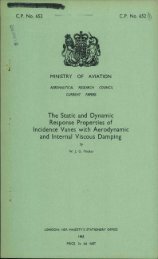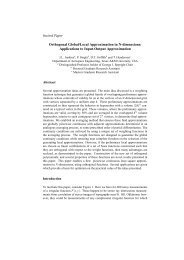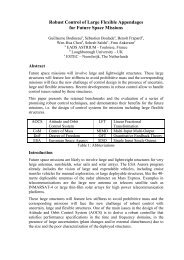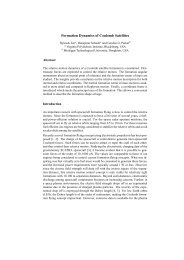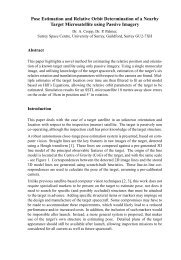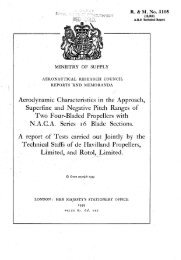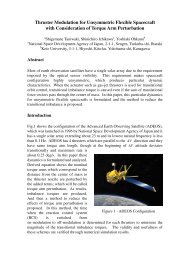A Survey of Unsteady Hypersonic Flow Problems
A Survey of Unsteady Hypersonic Flow Problems
A Survey of Unsteady Hypersonic Flow Problems
You also want an ePaper? Increase the reach of your titles
YUMPU automatically turns print PDFs into web optimized ePapers that Google loves.
ZL y<br />
v+l<br />
&s -<br />
4<br />
lc, (I-2fi,)Y -<br />
c<br />
U+l<br />
&i - 4<br />
M=K,<br />
MaKor(l-2%)<br />
- 55 -<br />
; (M6)) Ka{(; - &+ 4.$)Y - y (I-z;~,)M~<br />
K, = "(p/U<br />
v+l<br />
Y = 1+-<br />
12<br />
v+l<br />
+-<br />
45 WYj<br />
v+l<br />
p.M I$$ + (I-2G)Y - -6<br />
W!<br />
c<br />
3<br />
II+1<br />
. - M%(l-2%)<br />
4<br />
lJ+l<br />
bPK<br />
4<br />
--4;;,+4;;oa<br />
T a ( 3 ><br />
V+l<br />
- bP(l-2x,)<br />
12<br />
A "flutter" speed and frequency can then be found from these equations<br />
in the usual way if a value is assumed for a,. It oan be shown that<br />
equations (4.16) are the same as the linearized equations for flutter abwt .s<br />
large mean incxdence as if a, is replaced by as. Since q is, in fact,<br />
one half <strong>of</strong> the amplitude <strong>of</strong> the motion, it follows from this analysts that the<br />
flutter speed and frequency for an oscillation <strong>of</strong> large amplitude are the same<br />
as for the linearxzed flutter about a mean angle <strong>of</strong> attack as = q. Fig. 46,<br />
then, shows a boundary for the non-linear flutter case, es well as for the large



